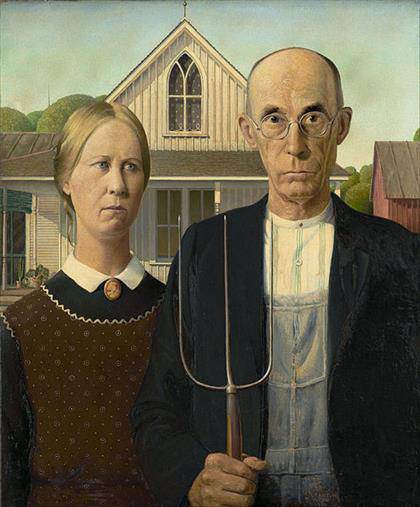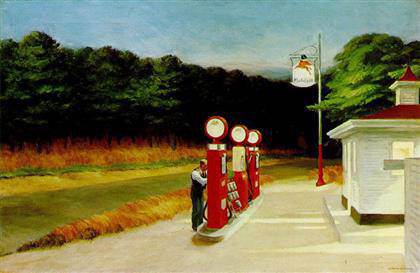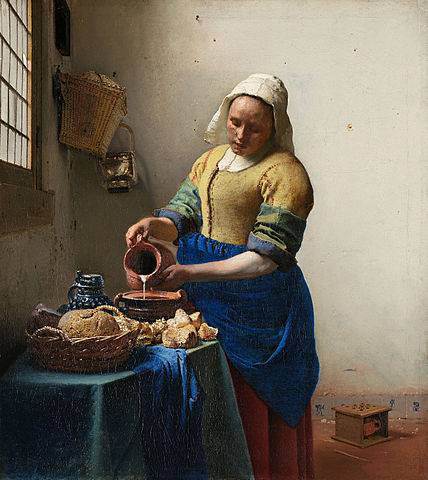
Grant Wood, “American Gothic”, 1930. Oil on beaver board, 78 x 65 cm. The Art Institute of Chicago, friends of American Art Collection, 1930.934;

Edward Hopper, “Gas”, 1940. Oil on canvas, 66.7 x 102.2 cm. Collection of Museum of Modern Art , New York. Mrs. Simon Guggenheim Fund, 1943. Photo © 2016. Digital image, The Museum of Modern Art, New York/Scala, Florence
America after the Fall: Painting in the 1930s The Royal Academy of Arts presents ‘America after the Fall: Painting in the 1930s’, an exhibition chronicling the turbulent economic, political and aesthetic climate that dominated the decade following the Wall Street Crash of 1929. 25 February – 4 June 2017.]]>
Source: Royal Academy of Arts
Drawn from collections across the USA, America after the Fall showcases forty-five seminal paintings by some of the foremost artists of the era. For the very first time, Grant Wood’s iconic painting “American Gothic”, 1930 (Art Institute of Chicago), is exhibited outside North America. The exhibition also features works by Thomas Hart Benton, Georgia O’Keefe, Philip Guston, Edward Hopper, Alice Neel and Jackson Pollock
The devastating impact of the Great Depression, brought about by the Wall Street Crash and followed by the Dust Bowl, caused America to enter the 1930s in flux. Over the next decade, the consequences of economic insecurity and social hardship, fuelled by mass urbanisation, industrialisation and immigration, reverberated throughout the country, as it struggled to rebuild. Artists endeavoured to capture these rapid changes, seeking to redefine American identity in their work, inadvertently creating a debate over what would become the national art form.
”America after the Fall: Painting in the 1930s” is arranged around thematic sections. “Industrial Life” examines how artists addressed the power of manufacturing and labour. “Urban Life” captures the role of the city and mass entertainment. “Looking to the Past” reveals how artists in the Depression era looked back at American history, myths and culture for inspiration. “Country Life” shows how Regionalist artists, such as Thomas Hart Benton idealised the rapidly disappearing rural America. The trauma of the period, whether from the rise of Fascism or economic uncertainty, is explored in “Visions of Dystopia”. Finally, “Looking to the Future” presents work by artists such as Arthur Dove and Jackson Pollock, who created dynamic paintings that abandoned figuration and served as a foundation to Abstract Expressionism.
”America after the Fall: Painting in the 1930s” has been organised by the Art Institute of Chicago, in collaboration with the Royal Academy of Arts, London, and Etablissement public du musée d’Orsay et du musée de l’Orangerie, Paris
Related content
Hopper: “Nighthawks” (from the series “50 masterworks of painting”)
Follow us on:


